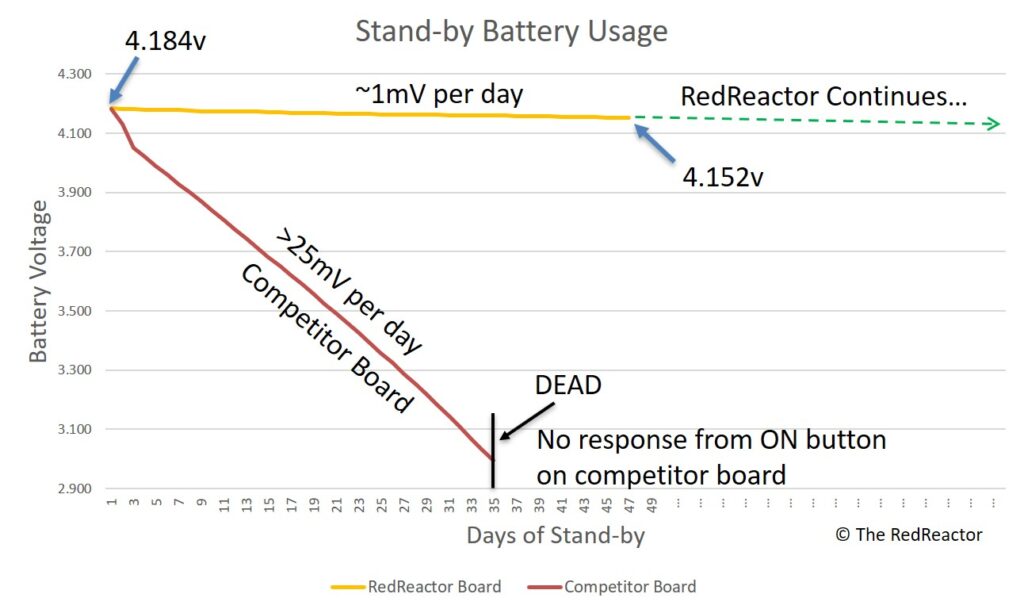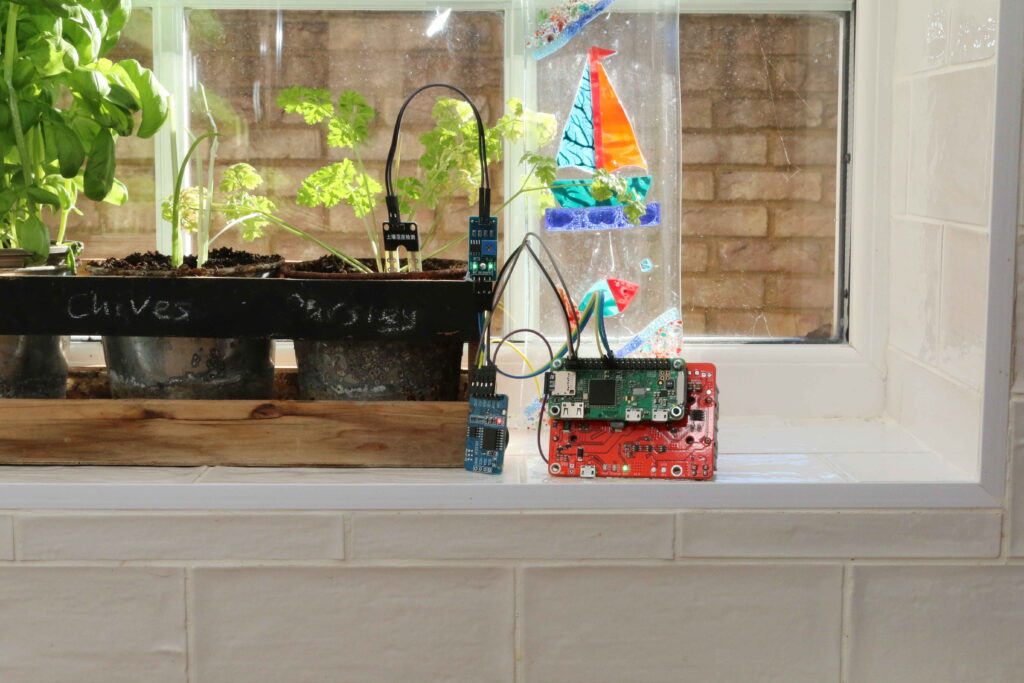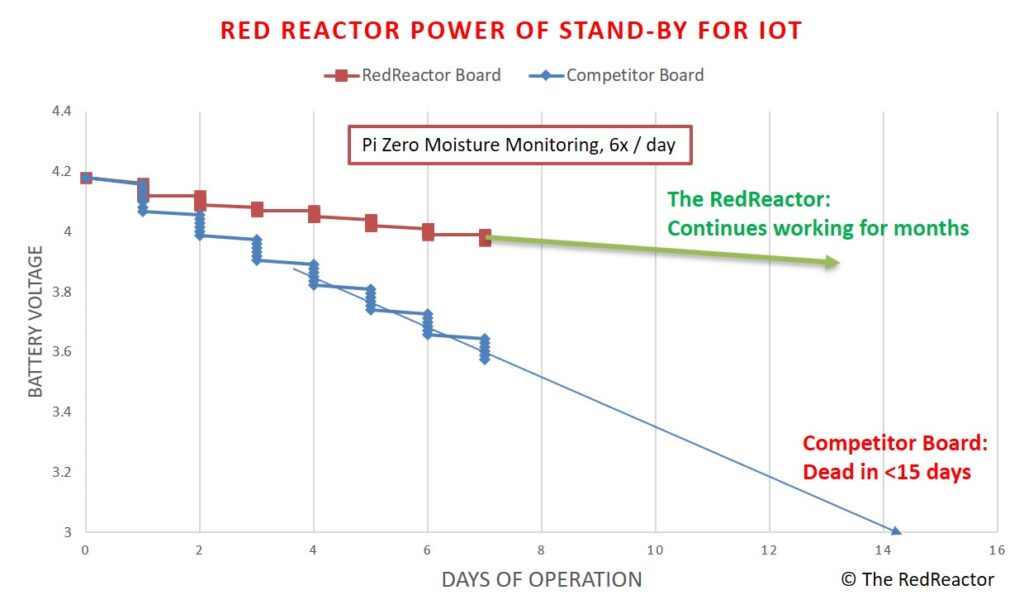The Power of Standby!
When you are creating your battery powered project, it is natural to be most concerned about the active current usage in order to judge not only how long your design can run for on batteries, but also whether your batteries can supply enough peak current to meet temporary but potentially heavy demands, where maybe the CPU is flat out or all your USB peripherals are switching on.
But that is only half the story, particularly for designs that spend significant time disconnected from the mains (such as portable devices, or internet of things gadgets). In our RedReactor video we show you how to turn the system off and wake-up on an alarm. Let’s see why the standby current can make a huge difference to your battery life.
Most battery power supplies use on-board processors to manage their behaviour, and these draw a lot of current even when the system is supposed to be ‘OFF’ – they remain active to wait for your button press! Maybe 10 milli-amps doesn’t sound like much, but as shown in the graph, we tested one such competitor part, and you can see that the batteries were completely dead in 35 days whilst the system was OFF and hence no longer responding to the ON button!
For us, low standby current draw was one of the Red Reactor design requirements. We managed to keep this to around 10 micro-amps, and you can see from the graph that this makes an enormous difference, keeping the system ready for use for many, many months. High standby current drain increases the number of charge cycles required, forcing you to replace your batteries much more often. On some competitor designs with Lithium polymer batteries (those flat, rectangular batteries with special Molex connectors) that will cost you around £25, so even if you don’t need many months of standby power, it all adds to the total cost of ownership. And less waste means you’ll be kinder to the planet too!
Moisture Sensing on Battery Power
To demonstrate this further, we created an experiment using a moisture sensor that just needs to power up a few times a day, check the moisture level in your favourite plant, then send you an email saying all is well (or you’d better rescue that plant!), and finally turn everything off waiting for the next wake-up alarm. The whole process takes about a minute and when running on batteries, the power consumed when everything is OFF becomes critical.
One advantage of turning everything OFF when not required is that these simple moisture sensors will otherwise deteriorate very quickly due to electrolysis, causing the terminals to rust and disintegrate within a few weeks.
The active time is minimised by booting into the command shell rather than the Desktop, and using crontab to run a simple python script automatically at boot time. In fact, it runs so early in the boot sequence that to successfully send the results by email it was necessary to run a small loop waiting for the domain name resolution to become operational. This typically took an extra 6 seconds.
In the picture above you can see that the Pi Zero has just been powered up with the RTC alarm pressing the RedReactor ‘ON’ button, and a python script is reading both the RedReactor battery voltage and the state of the Moisture GPIO input (here, thankfully, the plant has enough water!). No trailing cables and no need to access mains power in awkward to reach locations!
The test is still running, but after 1 week with 6 readings per day you can clearly see that with the Red Reactor, the voltage drop is dominated by the active time of the Raspberry Pi zero, whereas the competitor based battery supply has more than doubled the effective power consumption due to its high standby current.
So what does this all mean? Well, when you’re running your Raspberry Pi project on batteries and you’re using standby to save power, the RedReactor will still be powering up after several months, instead of having to sort out your batteries every 15 days when using competitor boards.






The moisture sensing experiment has now been running for a whole month, and with 6 readings per day the average voltage drop is measured at a tiny 0.01v per day, which just goes to prove that the Red Reactor is the best in class for all your Internet of Things projects!
The Red Reactor moisture sensing experiment has finally come to an end, after executing a massive 481 separate readings and filling up my inbox! This means that you could run the Red Reactor with a Pi Zero for more than a year if you just needed 1 reading per day. The experiment setup was far from optimised, for example, you could disable Bluetooth which we didn’t use, and for sure shorten the boot time by disabling unnecessary services. But hopefully this gives you an idea of what you can expect to achieve in your own projects with 2x 3000mAh batteries, which are now happily recharging to full capacity. It’s funny, I kinda got to like seeing emails from my Pi every day…
Wow – that’s super low power consumption; good job !